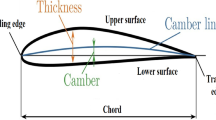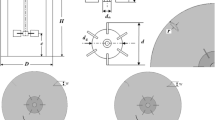Abstract
The global energy market has grown steadily as various energy technologies have been developed. Renewable energy has been used widely but conventional power plants are still used as major electric power sources, including steam turbines and gas turbines. Recently, flexible power plant operation in terms of load management has become important in the power generation industry. For flexible operation, overload valve operation has been introduced for ultra-supercritical steam turbine plants. Overload valve operation is an operation wherein some of the steam at the control valve is bypassed into the middle of the high pressure turbine. In this study, an in-house program is developed for the analysis of ultra-supercritical steam turbines using overload valve operation. A full off-design analysis is performed based on theoretical and empirical correlations. Four kinds of operations were comparatively investigated; control valve operation, sliding pressure operation, and two types of overload valve operation. The influence of the overload valve is analyzed in terms of operating characteristics and performance.
Similar content being viewed by others
References
U. S. EIA, Annual Energy Outlook 2014 with Projections to 2040, U.S. Department of Energy, Office of Integrated and International Energy Analysis (2014).
M. Fukuda, E. Saito, J. Iwasaki, M. Igarashi, S. Izumi, S. Takano, S. Nakamura and T. Takahashi, The status of advanced USC technology development in Japan, Proceedings of the International Conference on Power Engineering-09 (ICOPE-09) (2009).
K. M. Retzlaff and W. A. Ruegger, Steam turbines for ultrasupercritical power plants, POWER-GEN 1998 Europe, Milan.
J. Zachary, Steam turbine design considerations for ultrasupercritical cycles, ASME Paper GT2010-22317 (2010).
N. Okita, T. Sasaki, T. Suga and S. Iwai, Development and strategy for A-USC steam turbine cycle, ASME Paper GT2011-45549 (2011).
Y. Li, L. Zhou, G. Xu, Y. Fang, S. Zhao and Y. Yang, Thermodynamic analysis and optimization of a double reheat system in an ultra-supercritical power plant, Energy, 74 (2014) 202–214.
I. G. Wright, P. J. Maziasz, F. V. Ellis, T. B. Gibbons and D. A. Woodford, Materials issues for turbines for operation in ultra-supercritical steam, Research sponsored by the US Department of Energy, Office of Fossil Energy, Advanced Research Materials Program, Under Contract DE-AC05-00OR22725 with UT-Battelle, LLC (2004).
T. U. Kern, M. Staubli and B. Scarlin, The European efforts in material development for 650°C USC power plants-COST522, ISIJ International, 42 (12) (2002) 1515–1519.
M. Wechsung, A. Feldmüller and H. Lemmen, Steam turbines for flexible load operation in the future market of power generation, ASME Paper GT2012-69312 (2012).
R. Quinkertz, A. Ulma, E. Gobrecht and M. Wechsung, USC Steam turbine technology for maximum efficiency and operational flexibility, Power-Gen Asia (2008) 21–23.
M. Boss, T. Gadoury, S. Feeny and M. Montgomery, Recent advances in ultra super critical steam turbine technology, GE Energy (2002).
The Mathworks, Inc, MATLAB 2012b (2012).
D. H. Cooke, Modeling of off-design multistage turbine pressures by Stodola’s ellipse, Energy Incorporated PEPSE User’s Group Meeting, Richmond, VA (1983).
R. C. Spencer, K. C. Cotton and C. N. Cannon, A method for predicting the performance of steam turbine-generators: 16,500 kw and Larger, Journal of Engineering for Gas Turbines and Power, 85 (4) (1963) 249–298.
K. C. Cotton, Evaluating and improving steam turbine performance, Cotton Fact (1998).
The Mathworks, Inc, XSteam.
A. Leyzerovich and A. S. Leizerovich, Large power steam turbines: design and operation, Pennwell Corp. (1997).
S. C. Chapra and R. P. Canale, Numerical method for engineers, 6th Ed., McGraw-Hill (2010).
H. J. Jang, S. Y. Kang, J. J. Lee, T. S. Kim and S. J. Park, Performance analysis of a multi-stage ultra-supercritical steam turbine using computational fluid dynamics, Applied Thermal Engineering, 87 (2015) 352–361.
Enter Software, GateCycle ver 6.0 (2006).
Author information
Authors and Affiliations
Corresponding author
Additional information
Recommended by Editor Yong Tae Kang
S. Y. Kang received his M.S. degree from Dept. of Mechanical Engineering, Inha University in 2010, and is now a Doctoral student in the same department. His major research topic is performance analysis of energy and power generation systems.
J. J. Lee received his B.S. degree from the Department of Mechanical Engineering, Inha University, in 2015 and is currently a master's degree student in the same department. His major research topic is performance evaluation and CFD simulation of steam turbines.
T. S. Kim received his Ph.D. degree from Dept. of Mechanical Engineering, Seoul National University in 1995. He has been with Dept. of Mechanical Engineering, Inha University since 2000. His research interests are design and analysis of advanced energy systems including gas/steam turbine based power plants.
S. J. Park joined Doosan Heavy Industries, Limited, Ltd. in 1995 after receiving his Bachelor and Master’s degrees in Mechanical Engineering from Pusan University. He engaged in aerodynamic design and performance evaluation of Turbine/Generator performance team for the past seven years.
G. W. Hong graduated from the Department of Mechanical Engineering, Korea University, in 1997 and is currently a research member of Turbine R&D Center in Doosan Heavy Industries. His working topic is thermo-aerodynamic design and CFD simulation of steam turbines.
J. H. Ahn graduated from the Department of Mechanical Engineering, Yeungnam University, in 2006 and is currently a Thermodynamic Engineer of Turbine/Generator performance team in Doosan Heavy Industries. His working topic is thermodynamic design and performance evaluation of steam turbines.
Rights and permissions
About this article
Cite this article
Kang, S.Y., Lee, J.J., Kim, T.S. et al. Program development for performance analysis of a steam turbine system with the use of overload valve. J Mech Sci Technol 30, 5759–5769 (2016). https://doi.org/10.1007/s12206-016-1146-x
Received:
Revised:
Accepted:
Published:
Issue Date:
DOI: https://doi.org/10.1007/s12206-016-1146-x




